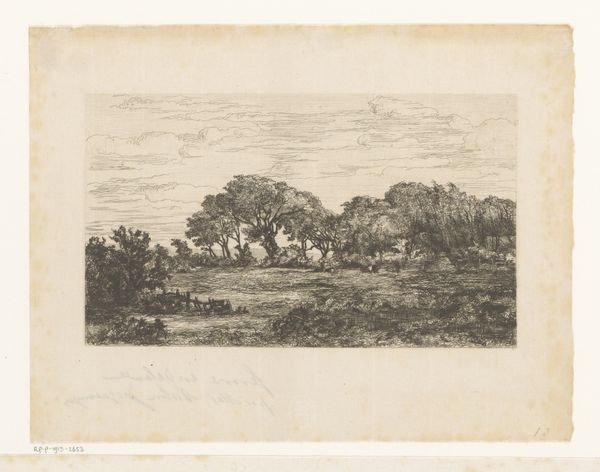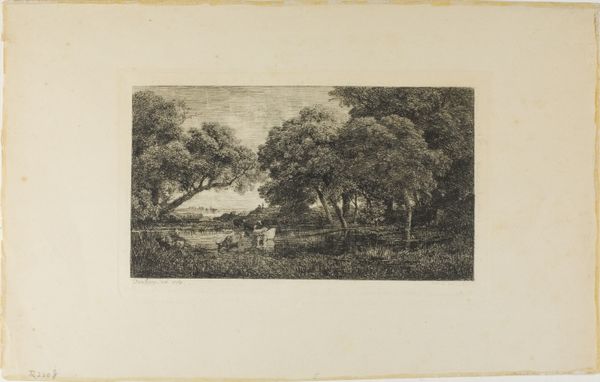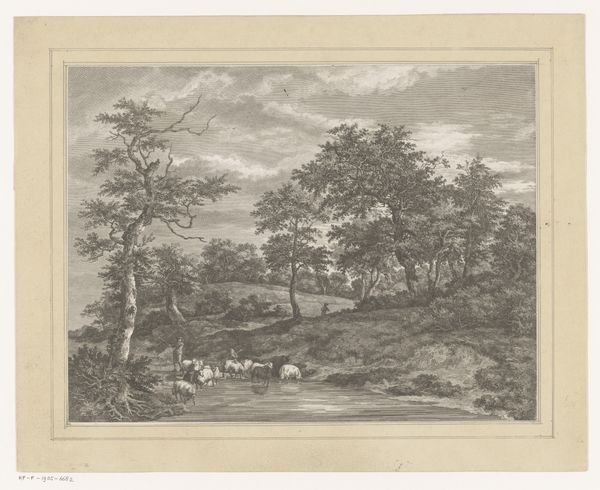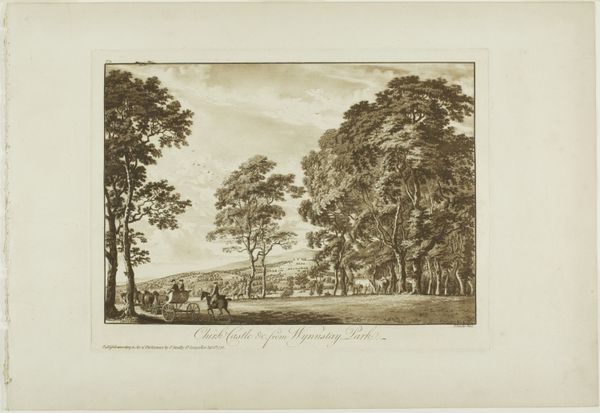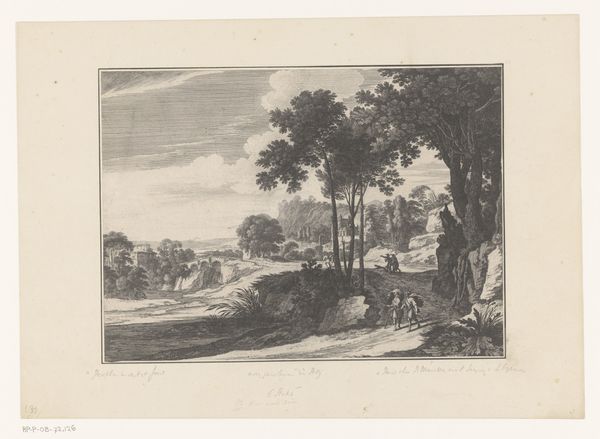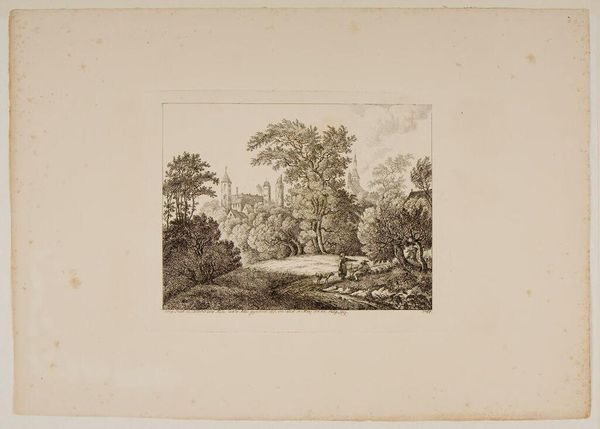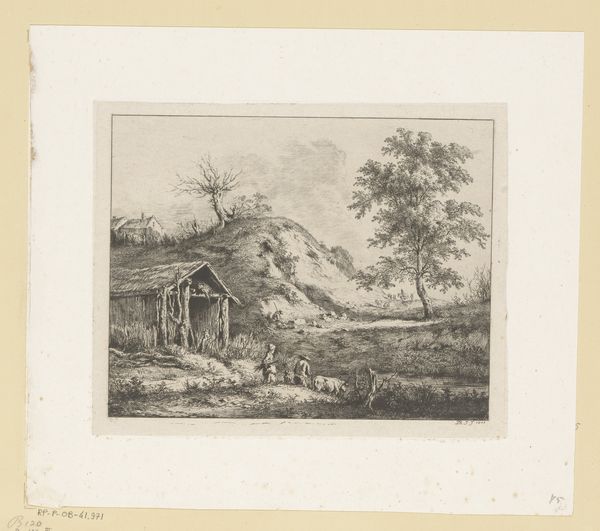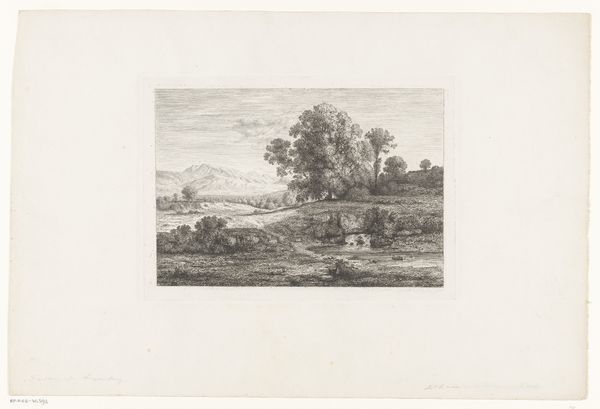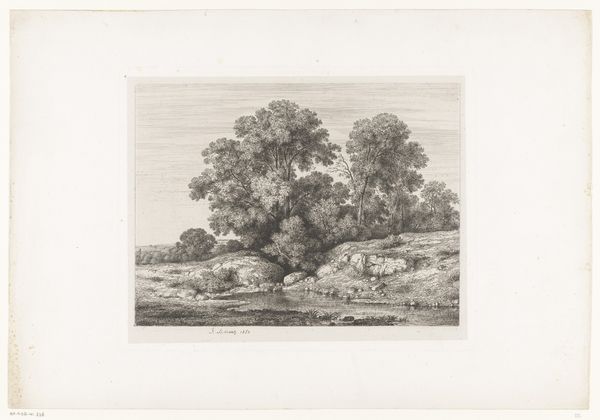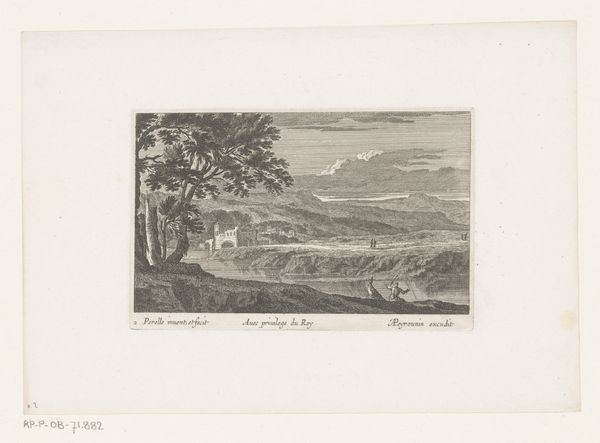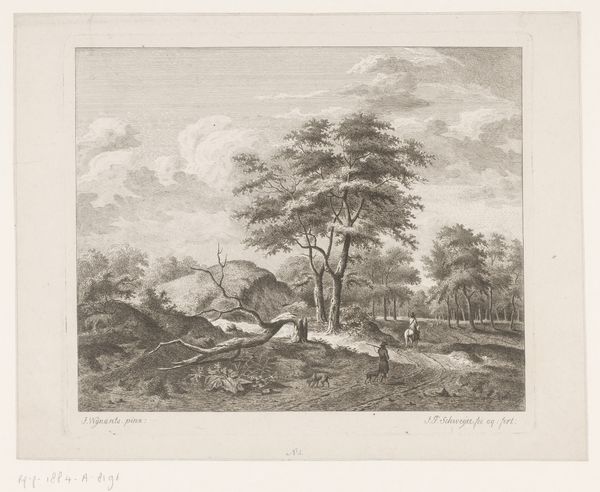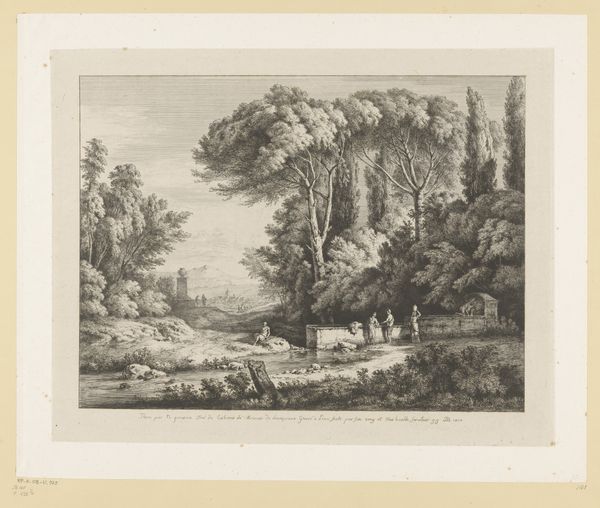
print, etching
#
narrative-art
# print
#
etching
#
landscape
#
history-painting
Dimensions: 6 1/2 x 7 15/16 in. (16.51 x 20.16 cm) (sheet)9 1/8 x 11 3/4 in. (23.18 x 29.85 cm) (mount)14 x 18 in. (35.56 x 45.72 cm) (mat)
Copyright: Public Domain
Editor: Here we have a 17th-century print at the Minneapolis Institute of Art, simply titled "Print". The medium is etching. It’s a landscape scene, quite pastoral and tranquil. The detail, despite the scale, is really quite striking. What jumps out at you when you look at this piece? Curator: What strikes me most is the delicate articulation of form through line. Consider the foreground foliage – each leaf rendered with subtle variations in tone, achieved through the controlled application of acid to the plate. Observe how this detailed foreground yields to a more generalized treatment of the distant hills, creating a sense of spatial recession. Editor: I notice that, it almost feels intentional. What's the purpose of such a deliberate choice in detail? Curator: Precisely. This compositional strategy serves to guide the viewer’s eye through the landscape. Notice the strategic placement of darker, more intensely etched areas which draws attention to the details within the scene. Are you aware of how the formal relationships of dark to light create visual tension within the etching? Editor: Now that you mention it, yes, especially how the highlights catch on the leaves, contrasting with the shadowed undergrowth. How would that have impacted its initial audience? Curator: We might consider it a reflection of period aesthetics, where idealized landscapes were appreciated for their ability to evoke emotion through a careful orchestration of visual elements. The contrast heightens a sense of depth while the variation in shading accentuates various textures. It encourages meditative viewing of the constructed space. Editor: So, it’s all about the forms and techniques coming together to create a sensory, immersive viewing experience. I had thought there would be narrative. Curator: Indeed. A focus on structural elements reveals intentional meaning, far from being neutral. Editor: Fascinating! Thanks, I learned to look for meaning in the structure of images, not just their narrative.
Comments
No comments
Be the first to comment and join the conversation on the ultimate creative platform.
